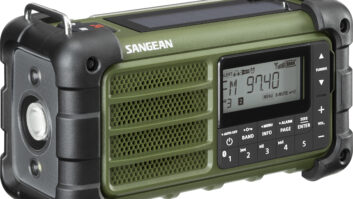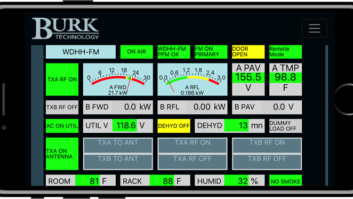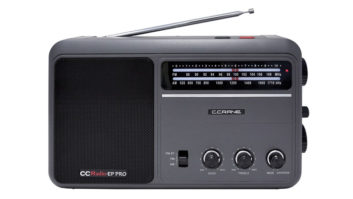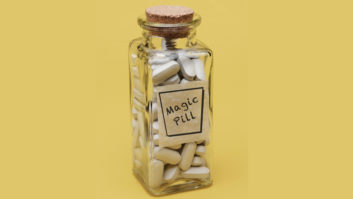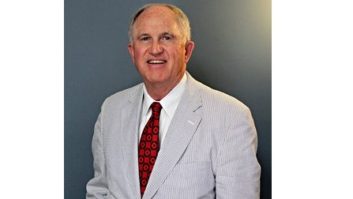Selecting an FM Antenna
Nov 1, 2012 3:20 PM, By Jeremy Ruck, PE
Selecting an FM antenna for use at a facility is much like choosing any other component: Some cost more than others, some are of higher quality than others, and some have different technical characteristics that lend themselves to different applications better than others. Regardless of which antenna you select, the best quality antenna you can afford should be chosen as this is the last item in your transmission chain, and the last point over which you have control of your signal.
Factors to be considered before making a purchase include local climate, effective radiated power, transmitter power, tower loading, population concentrations in your coverage area, directional patterns, and non-ionizing radiation protection. Your consulting engineer together with your sales representative are valuable resources to aid in the decision.

The accumulation of ice on an antenna will affect the match presented to the transmitter. It does not take much ice to present a load that will cause foldback or even VSWR trips. Icing tends to be most frequent in areas such as the plains and Ohio valley states. De-icers or radomes will limit the effect of ice accumulation. De-icers, which do not really de-ice but only aid in preventing ice from accumulating, are both costly and maintenance intensive. Radomes on the other hand do not fail unless physically broken, but can add a substantial amount of loading to a tower. Southern coastal areas do not require either for ice protection, but the addition of radomes may be desirable in some cases to limit element corrosion from salty air.
Power determination
Stations are of course licensed by their effective radiated power. For a given ERP there are numerous different combinations of transmitter power and number of antenna bays that will achieve a specified effective radiated power. Larger antennas wind up costing more initially, but the long-term backcharge is less due to lower electricity consumption by the transmitter. While it may seem like a good idea to go with a large antenna in order to reduce the transmitter power, such a course of action can have detrimental consequences.
For instance, a 100kW station may wish to select a 12-bay full-wave antenna in order to keep the transmitter power around 11-12kW or so. As the number of bays increases on an antenna, the beamwidth in the vertical plane drops drastically. A 12-bay antenna will have a half-power beamwidth of a little more than 2 degrees with much of the vertical plane relative field below the beam at less than 0.2. The result is that if your site is close to your population center you may overshoot the desired area resulting in spotty coverage. On the other hand, if your site is roughly centered between several cities located 30-40 miles out, as is the case with one group in the plain states, then a large number of bays is perfectly acceptable since the local fauna most likely is not listening to your station.
– continued on page 2
Selecting an FM Antenna
Nov 1, 2012 3:20 PM, By Jeremy Ruck, PE
Generally speaking most stations will choose to use an antenna with full-wave spacing between the bays. However, in certain instances, a half-wave antenna may be more desirable. A six-bay full-wave spaced antenna has a gain of roughly 3.3, which is similar to the 3.1 gain from a 10-bay half-wave assuming circular polarization on both. The half-power beamwidth of the main lobe in the vertical plane for the full-wave is around 4.2 degrees compared to roughly 5.2 degrees for the latter style antenna. This seemingly insignificant span of one degree can result in much better coverage over several miles of real estate. The drawback is that the half-wavelength spaced antenna will cost more due to a greater quantity of materials, and will result in additional tower loading.
Due to their radiation pattern in the vertical plane, however, half-wavelength spaced antennas are desirable in cases where non-ionizing radiation levels on the ground are a concern. In addition, some of the antenna manufacturers prefer half-wavelength spaced antennas for directional antennas as the pattern is controlled better than its counterpart with lambda spacing. Of course other spacings are permissible, and in some instances the use of 0.7 lambda spacing for a directional antenna may work better.
Going directional
There is no doubt that the FM band is becoming more and more crowded every day. The 2007 NCE filing window, for instance, saw the submission of some 3,600 applications. Although many wound up being dismissed for various reasons, the end result is a large number of new signals were added to the FM band, many of which were required to use a directional antenna. Some of the patterns submitted were downright strange, and quite frankly are not realizable with a run-of-the-mill side-mounted antenna.
In such cases it may be necessary to consider other designs such as panel or Yagi arrays. Panel arrays, because of their size, can add substantial loading to a tower by their sheer size and surface area. Yagi arrays on the other hand, may not cause as much loading to a structure, but can be more delicate in their construction, and suffer more from icing.
In some community antenna situations, the use of typical side mounted antennas is not practical due to the amount of available vertical real estate. In those cases more exotic solutions have been implemented. For instance, in St. Louis the community site there uses a combined antenna system consisting of a panel array with several layers. In this case, several stations have individual modules on a combiner spline feeding a single antenna. A drawback to this type of scheme is that an issue with the antenna or combiner will affect numerous stations in the market simultaneously. By contrast Willis Tower in Chicago accommodates numerous FM stations through a stack of cavity-backed resonators. Under this scenario each station has its own antenna, thus a failure does not have a widespread effect.
As previously mentioned, half-wave spaced antennas typically have lower downward radiation resulting in a lower power density at ground level. The ring-stub type antenna tends to have the greatest downward radiation component, and will have the greatest chance of exceeding the exposure standards. The Commission uses this design as a benchmark in their RFR analyses. If a proposed site passes the exposure criteria with this style, then there typically will not be a condition on the construction permit requiring measurements at the site. The double-V and roto-tiller style antennas have lower downward radiation, and specifying one of these designs may allow you to skate by the measurements.
In the end, the antenna can be one of the most costly components in the system to replace. Not only do the base material costs have to be considered, but factoring in the costs for a tower crew must be considered as well. It is not unusual for quality antennas, if well maintained, to last 30 years or more. True some of these antennas tend to be more expensive, but attempted cost savings by doing it on the cheap has a way of coming back to nip you when least expected.
Ruck is the principal engineer of Jeremy Ruck and Associates, Canton, IL.
November 2012
Step inside the radio studios at Universal Studios Orlando, ensure your data center’s reliability, apps for field contribution, selecting an FM antenna and Field Reports from JK Audio and AKG….






